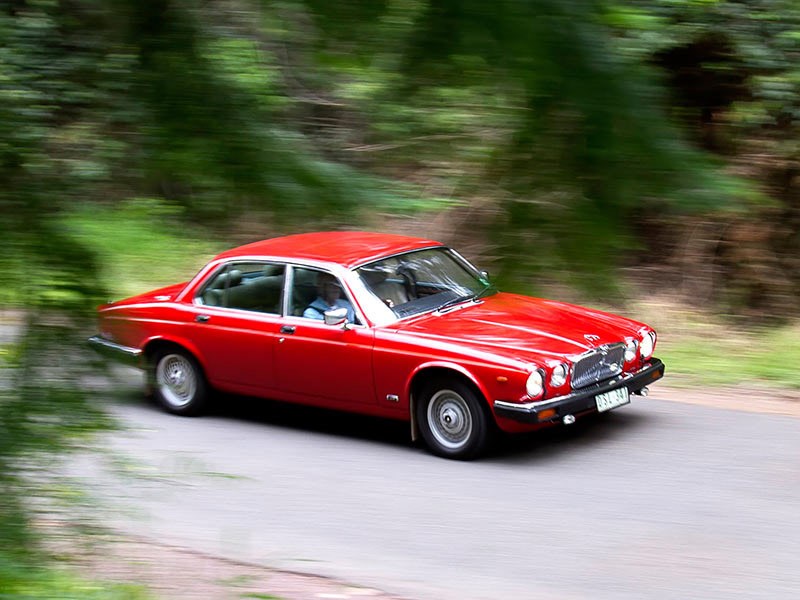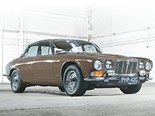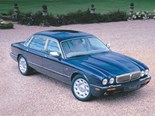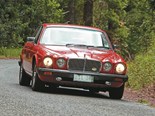Jaguar XJ6: Great cars of the 70s
 Jaguar XJ6 Series III
Jaguar XJ6 Series III

.jpg) Jaguar XJ6 Series III
Jaguar XJ6 Series III
.jpg)
.jpg) Jaguar XJ6 Series III
Jaguar XJ6 Series III
.jpg)
.jpg) Jaguar XJ6 Series III
Jaguar XJ6 Series III
.jpg)
.jpg) Jaguar XJ6 Series III
Jaguar XJ6 Series III
.jpg)

|
|
Jaguar XJ6 Series III
|
.jpg)
|
|
Jaguar XJ6 Series III
|
.jpg)
|
|
Jaguar XJ6 Series III
|
.jpg)
|
|
Jaguar XJ6 Series III
|
.jpg)
|
|
Jaguar XJ6 Series III
|
The '70s were a tough time for the British car industry, but out of the turmoil came a Jaguar that was destined for greatness...

|
|
Jaguar XJ6
|
Jaguar XJ6
When Jaguar introduced the XJ6 to the motoring media on 26 September 1968 at the Royal Lancaster Hotel in London, there was effusive praise but perhaps little understanding of how Jaguar’s finest car to date would eventually speak volumes about the decline of the once-great British car industry.
By 1968, most of Jaguar’s former rivals had been driven out of the market. Much of the problem from the mid-Fifties could be attributed to economies of scale. Put simply, too many small volume manufacturers competed for not all that many customers. Most had too many models requiring long production runs to amortise costs, yet the pace of societal change was such that customers constantly demanded something fresh and new.
Jaguar - as Swallow Sidecars - was founded and run by William Lyons – yes, Jaguars and Lyons – who had a great eye for design and arguably an even better one for business. Lyons drove a hard bargain with his suppliers and even before World War II, his cars offered remarkable value for money.
Armstrong Siddeley, Alvis, Daimler (consumed by Jaguar in 1960) and Lagonda all made cars that could match the luxury of Jaguars, and often their performance, but they were generally much pricier. Jaguar’s sales advantage multiplied and Lyons applied the thumbscrews still tighter to the company’s suppliers.
If there is a flaw to acknowledge in any account of the XJ6 it is that cost-cutting was reflected in the quality of many of its components, although this was artfully disguised when the cars were new.
Still on the subject of economies of scale, before the arrival of the new Jaguar, there were four different sedans – the 240/340 (successors to the Mark 2), the S-Type, the 420 and the gargantuan 420G (a 4.2-litre Mark X by a less charismatic name). The XJ pensioned off all four, although the 420G refused to die until 1970. So four cars with three engines (2.4, 3.4 and 4.2-litre sixes) were succeeded by one with a choice of 2.8 or 4.2-litre units.
Few cars of the second half of the twentieth century – let alone our 1970s decade – are as celebrated as the XJ6. While observations about worse than average reliability surfaced quite early on, these were rarely more than slight qualifications to rave reviews. Comparison tests generally proclaimed it the winner over all rivals including the previously untouchable Rolls-Royce Silver Shadow.
‘This latest XJ6 impressed us immensely,’ said Autocar in its 13 May 1971 edition, ‘Others may well beat it on one particular score, but its unique blend of comfort, silence, stability and value-for-money has no equal anywhere in the world.’
By the time the Series 2 (where ‘XJ6’ gave way to simple ‘XJ’) was introduced in September 1973, Sir William’s hardline approach with suppliers was no longer the main reason for quality woes. The British motor industry was suffering at the hands of unhappy trade unionists who sometimes took out their ire about working conditions on the cars themselves. Things went from bad to worse from the time Jaguar merged with Leyland in 1968 until John Egan, who took over as managing director in April 1980, and was able to introduce progressive improvements. Egan arrived less than a year after the launch of the Series III (the numeral ‘3’ never being used by Jaguar to describe this model). Arguably, Jaguar quality control was at its nadir, but many of the complaints were the same as in the previous decade.
Road & Track was perhaps the strongest critic. The US was Jaguar’s most important market. Sales boomed but the ownership experience had many customers swearing off (and at) the marque. In its June 1978 edition, Road & Track published a survey of 178 owners and reported that the XJ ‘takes third place on our list of least reliable cars’ behind two other British models, the Lotus Elan and ‘the all-time champ’ Rover 2000TC. It was from here that the oft-quoted remark about Jaguar owners needing two cars emerged: ‘…being the third Jag that I have owned, I have learned to live with the small pains of British autos. That’s why I own two cars!’ The report concluded: ‘If there is one statement that sums it all up, it’s probably the one from an XJ12 owner: "I’ve never been so ambivalent about anything in my life!"’
In its first test of the Series III for the September 1980 issue, Road & Track needed ‘four examples of the model, just to have a running car long enough to get all the numbers’. But David E. Davis raved about his test car in the June 1980 edition of Car and Driver: ‘If ever there was a car to refute the myth about British automobiles, it’s this one. It always started on the first twist of the key, even in below-zero weather…and the quality of everything from the map light to the twin-cam engine was first-class.’
Davis enthused in terms that would now be considered deeply politically incorrect: ‘The XJ6 is as slick as the inside of Faye Dunaway’s dressing gown. We could take that simile a step further, but Miss Dunaway’s legal advisers would be on the phone in a flash.’
It’s precisely because the car was so magnificent in conception that its troublesome service record was so infuriating. During 1981 the XJ40 prototype was exhaustively tested in company with the BMW 7-Series, the Mercedes S-Class and the existing Jaguar Series III. Arguably the benchmark here was in fact the Jaguar, especially in beauty (in the eyes of most beholders), refinement, silence and comfort. But the excellence of the design and engineering did not extend to build quality or reliability. British Leyland technology director Charles Maple wrote in a report on the XJ40: ‘The new model must achieve an enormous improvement in quality and reliability to meet the standards set by its competitors.’
At its launch, Jaguar’s engineering boss William Heynes said the XJ6 had been designed for a seven-year production run. No-one could have predicted in September 1968 that it would effectively be built for 24 years - and it would be 18 years before a successor was released!
But why did Jaguar take so long to replace the XJ when the company had seen the effect on rivals of stale models lingering in their line-ups? As early as 1972, work began on a prototype that was to be rejected by Leyland boss Donald Stokes in October of the following year. Stokes thought it looked too much like earlier models. Jaguar’s Leyland management wanted a new car that looked modern, while Jaguar’s own executives preferred traditional themes. This impasse inevitably caused delay.
By the end of 1974, British Leyland was broke. Jaguar increasingly struggled to retain its identity within the newly nationalised corporation. In 1977 a second facelift of the XJ6 was proposed, due to debut in October of the following year with an all-new car to follow in 1982. In fact it was not until February 1981 that money for tooling up the XJ40 was allocated.
Apart from the availability of a long-wheelbase version – soon standardised – from 1974, the Series 2 differed from its predecessor only in minor ways. But the 1979 Series III amounted to a major revision. From the waist down changes were minimal but there was an entire new glasshouse. Jaguar turned to Pininfarina for the Series III restyle, and it wasn’t their first dalliance with the Italian styling house. They’d previously been approached along with Bertone and ItalDesign to submit 1:1 models which had never made it past the initial approval stage.
In fact, the Pininfarina connection worked well. One reason may have been to prevent interference internally from BL. Limited funds meant that the lower body was mostly unchanged but an entire new glasshouse was created. The result was an airier feel and more head and shoulder room. A redesigned dashboard and new seats further contributed to the car’s "contemporary vintage" feel. Electronic injection replaced the twin SUs for a remarkable improvement in economy and stronger performance.
Jaguar was privately owned again in 1984, by which time John Egan had presided over huge quality gains in the Series III. The XJ6 was never intended to be facelifted twice but Jaguar’s problems in many ways stemmed from the brilliance of that 1968 model. The company was hidebound to a particular design language and it took the X351 model XJ in 2009 to finally plot a new course.
BUYING
Paradox has always partly defined the Jaguar XJ6. This most beautiful car had problems of unreliability, making it expensive to own. It’s one of the few cars that makes more sense to own at 25 or 40 years of age than it did brand new.
A completely rebuilt XK engine costs little more than $6000 supplied and fitted, which is no more than you’d spend on the same job on a Falcon or Commodore. The three-speed Borg-Warner automatic is also much cheaper to get rebuilt than, say, the four-speeder in a mid-1980s BMW. The XJ is like the MGB in the sense that a ready supply of parts is on offer and most are very reasonably priced.
But which version to buy? The original car had a traditional Jaguar dashboard with the minor gauges placed centrally. Beneath these was a row of identical rocker switches.
The Series 2 got a more logical, if less elegant, treatment with all gauges grouped in front of the driver. And the dipswitch climbed off the floor onto a column stalk. The frontal treatment was revised with the bumper raised to meet US safety legislation. Less major revisions were needed at the rear. These are sometimes referred to as the ‘chrome bumper’ cars.
The Series III got the Pininfarina glasshouse, another new grille, chrome and rubber bumpers and distinctive new taillights. All engines were electronically injected. One negative is that the cars rust out around the front and rear screens. Because Jaguar engineers didn’t want Rover’s V8 engine imposed on them, they designed the XJ40 not to accept it. This also meant it would not accept the V12 until heavily modified. So the Series III XJ lived on in V12 guise until 1992!
Unique Cars magazine Value Guides
Sell your car for free right here
Get your monthly fix of news, reviews and stories on the greatest cars and minds in the automotive world.
Subscribe

.jpg)














